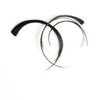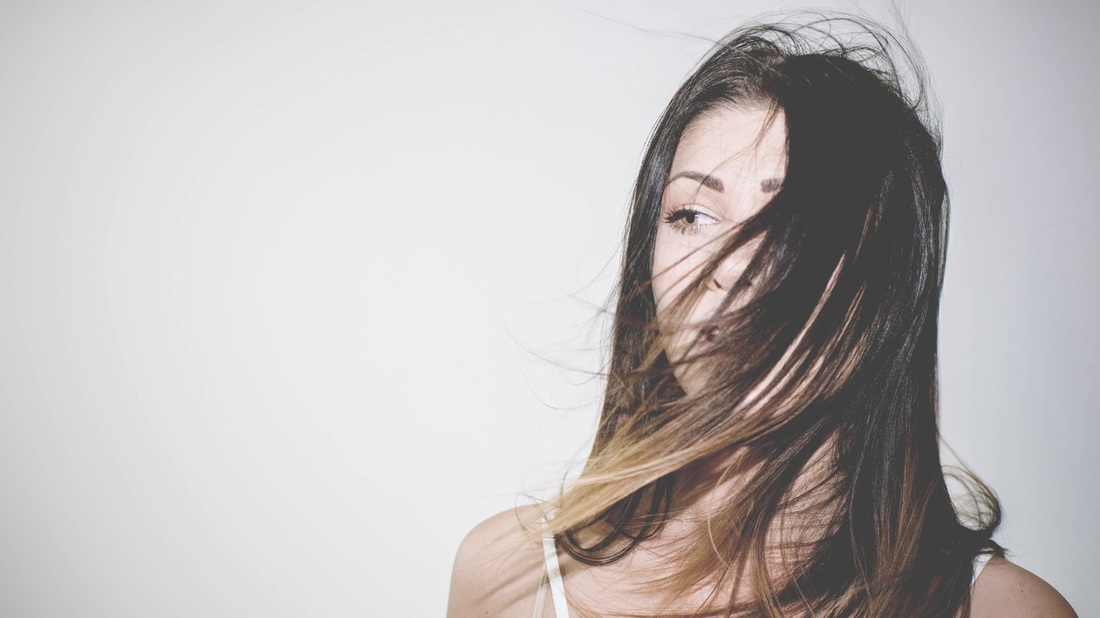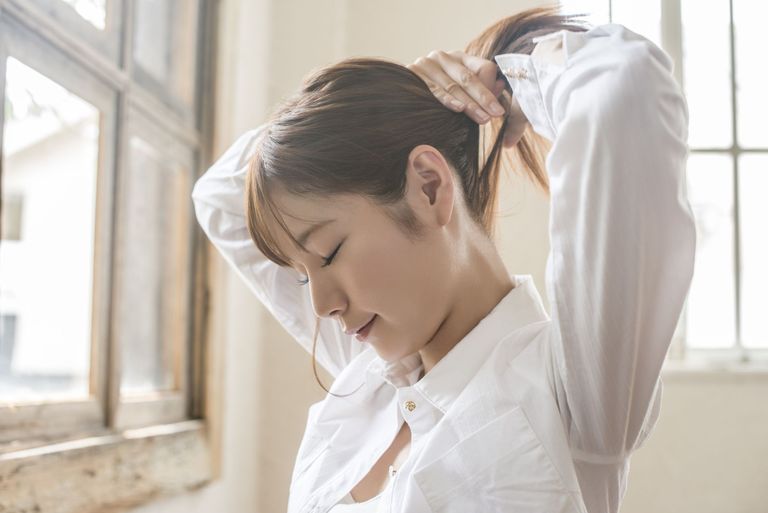|
9/26/2016 The Basics of Straight Hair CareUnlike their curly cousins, those with straight hair generally fall into two categories: naturally straight and chemically straightened. While we will touch on different straight hair textures, the care advice in this article is meant for those with naturally straight hair. Chemical straighteners require their own unique aftercare and that largely depends on the professional straightening product used at the time of service. In any case, despite popular belief, those with naturally straight hair are not immune to styling snafus and hair health challenges. Here, we will cover the basics of straight hair care for optimal hair health (which translates into better-looking styles).
Before The Shower Straight hair tends to be particularly susceptible to split ends (which is not the same as breakage, but more on that, later) so it should be handled with care. In general, for most hair types and textures, it’s not necessary to wash your hair daily, and in fact, skipping a day or two (depending on how much oil your scalp produces) is better for your overall hair health. If you have fine-to-normal straight hair, try stretching out your shampoos to 2x per week, with frequent brushing. If you are a heavy product user, however, you may want to up that number to 3x a week. For coarser hair, which traps more dirt and grime, you will want to suds up every other day. Before lathering up, run a boar bristle brush through to work out any tangles, snarls or knots. The brush will also distribute natural oils from the scalp through the length of the hair, which will help combat over-drying from shampoos or steam. In The Shower It’s not just what you use, but how you shampoo can also affect your hair health. With straight hair, it is best to start at the top and gently work your way down. This means you must resist the urge to pile it all on top of your head and get to scrubbing. Hear us out: making a big sudsy pile of hair will encourage tangles and snarls. It’s also harder to ensure that your hair will actually get clean. Think of it this way, if you were to just throw all of your dirty dishes in a pile at the bottom of your dishwasher, they probably wouldn’t come out as spotless as if you had lined them up neatly on the rack. It’s the same with your hair. The “pile up” method also encourages scalp scrubbing, which is not going to do you any favors. The more aggressively you stimulate your scalp, the more oil it will produce, which means the more often you will want to shower, which leads to more scalp scrubbing, which leads to more oil. And here we are back again. It’s best to take the advice from the back of your shampoo bottle and “massage gently.” When it comes to conditioner, this is where we break into groups. Fine-haired folk should apply their conditioner from mid-length to ends and comb through with a wide-tooth comb. Let the conditioner sit for about a minute or so, then rinse very, very thoroughly. Conditioner, along with its highly beneficial moisturizing qualities, also has a tendency to weigh hair down. For coarser hair, use the same application technique, but let the conditioner sit a bit longer. Two to five minutes should suffice. After The Shower You’ll want to blot straight hair very gently with a soft, fluffy towel. Apply a leave-in conditioner from mid-length to ends and comb through to remove any tangles. A fun little styling tip for straight-haired ladies (or men, honestly, it’s becoming a trend in our current man bun era) braids are a great way to combat tangles. Tossing your locks into a simple braid after the shower will protect from snarls and create a lovely loose wave pattern as the hair dries. Just be careful not to tug or pull hair while styling wet, as this could cause additional damage. If you opt for the “hair down” look, be sure to keep a soft hairbrush on you. You’ll want to brush your hair whenever it’s tangled and before you go to sleep. Please don’t just rake your fingers through to get them out. This causes more damage which can lead to more tangles. Brushing any more than that may actually cause more damage, but a little brushing here and there will help keep hair moisturized and snarl-free. Split-Ends Straight hair tends to be particularly prone to split ends, however, a lot of people are confused by what a split end actually is. If you see a lot of tiny hairs sticking out all over your head, those are not split ends, that is breakage. Breakage occurs from hair being handled too roughly and/or being too dry. If you frequently put your hair into a ponytail while wet, opt for a hairbrush over a comb post-shower, or tend to twist your hair around your fingers throughout the day, you are asking for breakage. Split ends, however, aren’t really preventable by altering your behavior. It’s natural. Splits happen. Let’s get a quick and dirty on how to spot a split end:
This is a fantastic segway into just how often you should be trimming your hair to keep it at optimum health. Since fine, straight hair is a little more fragile and therefore more prone to splits, you should go in for a trim every 4-6 weeks. If coarse hair has been treated well, it could go a little longer between trims. 6-8 weeks is perfectly acceptable. If you are extra, extra careful with your hair, you may even be able to go a tad bit longer, just make sure to do frequent checks for split ends. Once a split starts, it cannot be stopped. Left unchecked, a split “end” will actually travel up the entire length of the hair and at that point, it’s really unfixable. 9/25/2016 4 Natural Solutions for a Dry Scalp4 Natural Solutions for a Dry ScalpBy Cathy Wong, ND - Reviewed by a board-certified physician.
Natural remedies are often used in the treatment of dry scalp, a very common skin problem. In some cases, dry scalp may be triggered by environmental issues (such as dry outdoor or indoor air), while in other cases dry scalp is associated with conditions like dandruff, eczema, and psoriasis. Here's a look at several types of natural remedies said to be helpful: 1) Hair Oils Applying hair oils may help treat dry scalp by restoring moisture to your skin. These remedies include:One of the lesser-known oils said to act as a dry scalp remedy, Brahmi oil has long been used to enhance skin health in ayurvedic medicine. This oil contains extracts of the herbs Bacopa monnieri and Gotu kola, usually combined with sesame oil or coconut oil. 2) Tea Tree Oil Although research on the use of any type of natural remedy in the treatment of dry scalp is lacking, there's some evidence that tea tree oil may be beneficial in treating dandruff. A type of essential oil long used in aromatherapy, tea tree oil sometimes appears as an ingredient shampoos, conditioners, and scalp moisturizing products. While few studies have tested tea tree oil's effectiveness against dandruff, a report published in the Journal of the American Academy of Dermatology in 2002 indicates that shampoo enriched with tea tree oil may help people with mild to moderate dandruff. For the study, 126 people (ages 14 and older) used either a 5% tea tree oil shampoo or a placebo shampoo every day for four weeks. At the study's end, those given the tea tree oil shampoo showed a 41 percent improvement in scalp scaliness, itchiness, and greasiness. Those given the placebo shampoo, on the other hand, showed only an 11 percent improvement in such symptoms. 3) Omega-3 Fatty Acids Some practitioners of alternative medicine suggest that increasing your intake of omega-3 fatty acids can treat dry scalp by improving your overall skin health. Available in dietary supplement form (including cod liver oil and krill oil supplements), omega-3 fatty acids are also found naturally in foods like flaxseeds and in oily fish like salmon, sardines, tuna, mackerel, and herring. 4) Apple Cider Vinegar Apple cider vinegar is touted as a natural remedy for dry scalp associated with dandruff. Proponents suggest that apple cider vinegar can restore the pH balance of the scalp and, in turn, inhibit the overgrowth of Malassezia furfur (a yeast-like fungus thought to contribute to dandruff development). A typical treatment for dry scalp involves mixing 1/4 cup apple cider vinegar with 1/4 cup water. Once poured into a spray bottle and then spritzed onto the hair and scalp, the mixture is left on for 15 minutes to an hour and then rinsed from the hair. Proponents of this approach generally recommend using the mixture about once or twice a week. Using Natural Remedies for a Dry Scalp While not all dry scalp remedies may benefit your skin, treating dry scalp with natural products is generally considered safe. Try testing out several dry scalp remedies to find the solution that's best for you. Although in many cases dry scalp is merely a cosmetic issue, it may sometimes result from conditions like psoriasis (a chronic health problem that can lead to severe itching and, in turn, increase your risk of bacterial skin infections brought on by frequent scratching). If your dry scalp persists or is accompanied by such symptoms as swollen joints, ridged nails, and silvery scales on your skin, make sure to consult a physician rather than self-treating with natural remedies. Self-treating and avoiding or delaying standard care can have serious consequences. Sources Piccardi N1, Manissier P. "Nutrition and nutritional supplementation: Impact on skin health and beauty." Dermatoendocrinol. 2009 Sep;1(5):271-4. Satchell AC1, Saurajen A, Bell C, Barnetson RS. "Treatment of dandruff with 5% tea tree oil shampoo." J Am Acad Dermatol. 2002 Dec;47(6):852-5. Disclaimer: The information contained on this site is intended for educational purposes only and is not a substitute for advice, diagnosis or treatment by a licensed physician. It is not meant to cover all possible precautions, drug interactions, circumstances or adverse effects. You should seek prompt medical care for any health issues and consult your doctor before using alternative medicine or making a change to your regimen. 9/24/2016 0 Comments Tricology: Types of Hair LossFemale Hair Loss and Male Pattern Hair Loss are the most common causes of hair loss. The development of genetic hair loss is associated with the shortening of the anagen (growing) phase of the hair cycle and consequently with an increase in the proportion of telogen (resting) hairs. There is a reduction in the size of the affected follicles, which results in a reduction in the diameter of the hairs that they produce. This is an essential feature of this type of hair loss, which accounts for the thinning of the hair and the widening of the partings.
Female Hair Loss Female genetic hair loss affects over 30% of women. The hair loss is typically diffuse (evenly spread over the scalp) and affects the frontal and vertex (crown) areas with similar severity. Often a band of slightly denser hair is retained along the frontal hairline. Also, women can exhibit a normal amount of hair in the front area of their scalp, which gradually thins out as you look farther back near their crown. Called a “Christmas-tree” look, this is also indicative of a genetic condition. Male Pattern Hair Loss The onset of male genetic hair loss is linearly related to age; that is, 20% of men experience some hair loss by age twenty; 30% of men experience some hair loss by age thirty, and so on. The hair begins to recede at the temples and thin in the vertex (crown) area. Eventually, the entire fronto-vertex (between the hairline and crown) area of the scalp can be involved. Alopecia Areata Alopecia areata is characterized by patchy scalp hair loss which occasionally affects every hair follicle on the scalp (alopecia totalis), or body (alopecia universalis). Alopecia Areata has a rapid onset but tends to spontaneously reverse. Trichotillomania Trichotillomania is the loss or damage of scalp hair through repeated pulling or twisting due to irresistible compulsive impulses. Telogen Effluvium This hair loss condition, which occurs mainly in women, is usually caused by a temporary disturbance to the hair cycle causing the growing (anagen) hairs to prematurely enter the resting (telogen) phase of the hair cycle. Stress, illness, medication, anemia, and weight loss are the most common causes, however, many other factors can also influence this condition. Cicatricial Alopecia Cicatricial alopecia is hair loss which occurs with the destruction of the hair follicles. It can be caused by a disease affecting the follicles themselves, or by some process external to them. The follicles may be absent as a result of trauma such a burn or a blow or cut to the head or they may have been destroyed by a specific infection. Traction Alopecia Traction alopecia is the breaking of the hair by friction or tension due to vigorous brushing, blow drying, and/or chemical overprocessing. Traction Alopecia: The hairstyles which can cause hair loss Traction alopecia is the hair loss that occurs after persistent gentle pulling on the roots over several hours or days. Unlike a hair pluck which is painful, persistent gentle pulling may go unnoticed until bald spots or alopecia starts to appear. In these times when large numbers of women are having hair extensions, wefts, braids and clip-ins, including the recent trends of the man bun and the man braid, dermatologists are starting to see more women with traction alopecia. Click here to read more ( I sure hope your hairbrush doesn’t look like this one. ) L'Oréal faces lawsuit after Amla Legend hair loss backlashPlaintiffs allege that thousands of women who bought the relaxer product have experienced distressing injuries.
The lawsuit, submitted on 14 September by high profile attorney Mark J Geragos, lists a number of complaints of the product posted to the Amazon website. Two US women have filed a class action lawsuit against L’Oréal and its hair care brand SoftSheen-Carson claiming that one of its hair relaxer kits causes hair loss and scalp burns. The SoftSheen-Carson Optimum Amla Legend No-Mix, No-Lye Relaxer is said to help afro-caribbean hair to feel fuller and silkier through the inclusion of amla oil from the Indian amla super fruit. However, the plaintiffs allege that thousands of women who bought the product have experienced distressing injuries including hair loss and breakage, and scalp irritation, blisters and burns. Despite not listing lye as an ingredient, the plaintiffs claim that the inclusion of lithium hydroxide can cause damaging effects including those listed above. They also stated that it is unclear whether the product truly is a ‘no-lye’ relaxer as the retail lists sodium hydroxide in the products’ ingredients online. Dorothy Riles, a resident in Cook County, Illinois and one of the key plaintiffs behind the lawsuit, claims that when she used the product she was left with bald patches, burns and scabs forcing her to wear a wig. Sharon Manier, the other key plaintiff from Riverside County in California, similarly claims that upon using the product she immediately experienced scalp irritation and, after washing it out, she saw “significant” hair loss. The lawsuit, submitted on 14 September by high profile attorney Mark J Geragos, lists a number of complaints of the product posted to the Amazon website. One read: “Don't use it! My 26 year old daughter is upstairs crying her eyes out because her hair is gone.” The plaintiffs are demanding that L’Oréal is tried by jury and are seeking compensation on the grounds of false advertising, unfair competition, consumer fraud, deceptive business practices, breach of express warranty, breach of implied warranty of merchantability, unjust enrichment, fraud and negligence. (Sourse) |
Hair by BrianMy name is Brian and I help people confidently take on the world. CategoriesAll Advice Announcement Awards Balayage Barbering Beach Waves Beauty News Book Now Brazilian Treatment Clients Cool Facts COVID 19 Health COVID 19 Update Curlies EGift Card Films Follically Challenged Gossip Grooming Hair Care Haircolor Haircut Hair Facts Hair History Hair Loss Hair Styling Hair Tips Hair Tools Health Health And Safety Healthy Hair Highlights Holidays Humor Mens Hair Men's Long Hair Newsletter Ombre Policies Procedures Press Release Previous Blog Privacy Policy Product Knowledge Product Reviews Promotions Read Your Labels Recommendations Reviews Scalp Health Science Services Smoothing Treatments Social Media Summer Hair Tips Textured Hair Thinning Hair Travel Tips Trending Wellness Womens Hair Archives
January 2025
|
|
Hey...
Your Mom Called! Book today! |
Sunday: 11am-5pm
Monday: 11am-6pm Tuesday: 10am - 6pm Wednesday: 10am - 6pm Thursday: By Appointment Friday: By Appointment Saturday: By Appointment |





 RSS Feed
RSS Feed